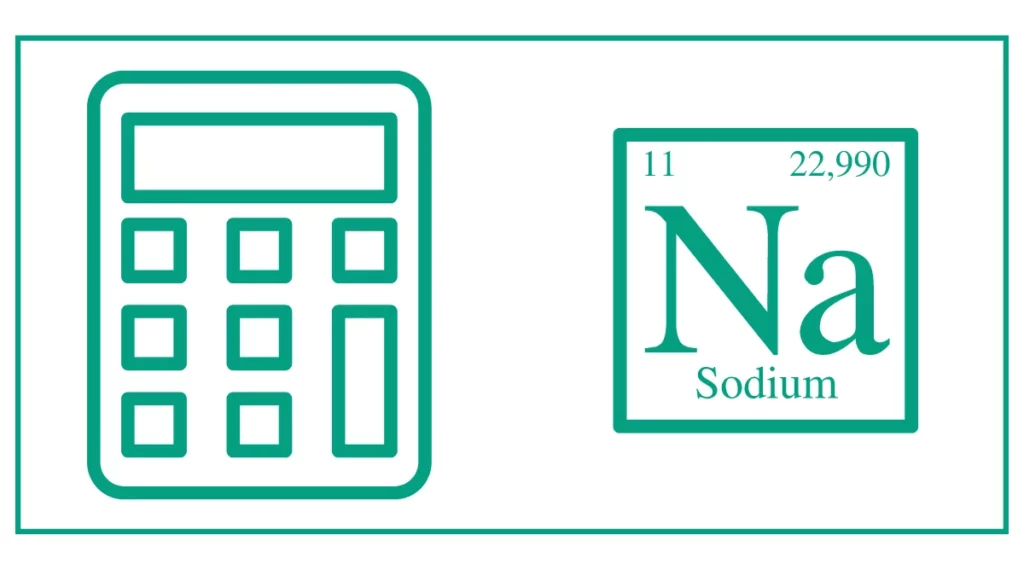FENa Calculator (Fractional Excretion of Sodium)
The FENa calculator helps you determine the percentage ratio between the amount of sodium excreted through urine and the quantity filtered and reabsorbed by the kidney.
Fractional sodium excretion (FENa) is not a test. Instead, it’s based on blood and urine salt and creatinine concentrations. Urine and blood chemistry tests are needed for this computation.
Urine and blood samples are taken together and sent to a lab. Salt and creatinine levels are checked there. The chemical byproduct of creatine is creatinine.
Once you have received the results, you can calculate and compare the results.
Please note that FENa is helpful only in acute renal failure. Diuretic patients cannot utilize it.
The results are shown by using these criteria:
- Prerenal cause: FENa <1%
- Intrinsic Renal cause: FENa 1-4%
- Postrenal cause: FENa >4%

You might want to calculate the best time for the ETG test or remaining medication.
The Fractional Excretion of Sodium (FENa) Calculator is an essential tool in nephrology, used to assess kidney function and help determine the cause of acute kidney injury (AKI). By analyzing the levels of sodium and creatinine in the blood and urine, this calculator can differentiate between pre-renal, intrinsic, and post-renal causes of renal dysfunction.
What is FENa?
Definition
FENa stands for Fractional Excretion of Sodium. It is the percentage of the filtered sodium load that is excreted in the urine. FENa is widely used to help differentiate between different types of acute kidney injury, particularly pre-renal azotemia and acute tubular necrosis (ATN).
Why is FENa Important?
Understanding the FENa value is crucial because it helps healthcare providers identify the underlying cause of renal failure. This information is vital for determining the appropriate treatment and improving patient outcomes. The FENa Calculator is a quick and reliable way to obtain this important diagnostic parameter.
How the FENa Calculator Works
Required Parameters
To calculate the Fractional Excretion of Sodium, the following parameters are needed:
- Plasma Creatinine (PCr): The concentration of creatinine in the blood.
- Plasma Sodium (PNa): The concentration of sodium in the blood.
- Urine Creatinine (UCr): The concentration of creatinine in the urine.
- Urine Sodium (UNa): The concentration of sodium in the urine.
Calculation Formula
The formula for calculating FENa is:
FENa(%)=(UNa×PCr/PNa×UCr)×100Step-by-Step Calculation
- Collect Samples: Obtain blood and urine samples from the patient to measure the required parameters.
- Input Values: Enter the measured values of PCr, PNa, UCr, and UNa into the FENa Calculator.
- Calculate FENa: The calculator uses the formula to determine the FENa percentage.
- Interpret Results: Based on the FENa value, interpret the likely cause of the renal dysfunction.
Interpretation of FENa Results
FENa Values and Their Significance
- FENa < 1%: Indicates a pre-renal cause of acute kidney injury, such as dehydration or heart failure, where the kidneys are conserving sodium.
- FENa 1-4%: Suggests intrinsic renal pathology, such as acute tubular necrosis (ATN), where the kidneys are unable to reabsorb sodium effectively.
- FENa > 4%: Indicates a post-renal cause, such as urinary tract obstruction, where sodium reabsorption is impaired due to obstruction.
Clinical Examples
- Pre-Renal AKI: A patient with severe dehydration presents with an FENa of 0.5%. This low value suggests the kidneys are functioning normally in response to reduced blood flow, conserving sodium to maintain blood pressure.
- Intrinsic Renal AKI: A patient with sepsis shows an FENa of 3%. This higher value indicates damage to the kidney tubules, impairing their ability to reabsorb sodium.
- Post-Renal AKI: A patient with a bladder obstruction has an FENa of 5%. This high value suggests that the kidneys cannot properly reabsorb sodium due to the back pressure from the obstruction.
Limitations of the FENa Test
Factors Affecting Accuracy
Several factors can affect the accuracy of the FENa test, including:
- Diuretic Use: Diuretics can artificially increase urinary sodium excretion, leading to misleading FENa values.
- Chronic Kidney Disease (CKD): In patients with chronic kidney disease, the interpretation of FENa may be less reliable due to altered kidney function.
- Acute Glomerulonephritis: This condition may produce misleading FENa results because of the glomerular pathology involved.
Alternatives to FENa
In certain situations, the Fractional Excretion of Urea (FEurea) may be a more reliable alternative to FENa, particularly in patients taking diuretics. FEurea is calculated similarly and can provide valuable information when FENa is not reliable.
Example of Use
A 45-year-old male patient presents with symptoms of acute kidney injury. Blood and urine samples are collected, revealing the following values:
- Plasma Creatinine (PCr): 2.5 mg/dL
- Plasma Sodium (PNa): 140 mmol/L
- Urine Creatinine (UCr): 150 mg/dL
- Urine Sodium (UNa): 10 mmol/L
Using the FENa Calculator:
FENa(%)=( 10×2.5/140×150)×100=0.12%The result of 0.12% suggests a pre-renal cause of acute kidney injury, indicating that the kidneys are responding to decreased perfusion by conserving sodium.
Conclusion
The Fractional Excretion of Sodium (FENa) Calculator is a valuable tool for healthcare providers to assess kidney function and determine the cause of acute kidney injury. By accurately measuring and interpreting FENa, clinicians can make informed decisions about diagnosis and treatment, leading to better patient outcomes. While there are limitations to the FENa test, understanding its application and interpretation can greatly enhance clinical practice.
References
- Espinel C. H. (1976). The FENa test. Use in the differential diagnosis of acute renal failure. JAMA, 236(6), 579–581. doi.org/10.1001/jama.236.6.579
- Zhang, W. R., & Parikh, C. R. (2019). Biomarkers of Acute and Chronic Kidney Disease. Annual review of physiology, 81, 309–333. doi.org/10.1146/annurev-physiol-020518-114605
- Brosius, F. C., & Lau, K. (1986). Low fractional excretion of sodium in acute renal failure: role of timing of the test and ischemia. American journal of nephrology, 6(6), 450-457.





